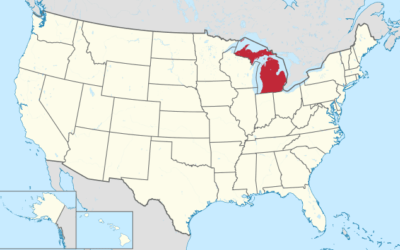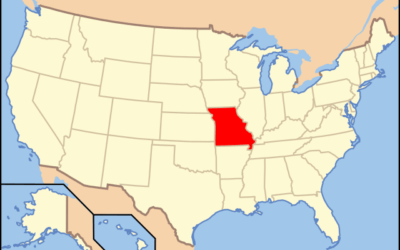Arkansas Prison System: What to Know
Arkansas’s dystopian incarceration system is a hot topic, with 912 per 100,000 residents locked up. This bleak reality is more than just numbers; it’s a crisis. The state’s policies, often labeled “tough on crime,” result in high imprisonment rates. Yet, these measures don’t seem to reduce crime. The Arkansas General Assembly tries to address this, but challenges remain. Nearly 27,000 people are currently behind bars. Another 64,000 are on probation or parole. Many incarcerated people face harsh conditions and limited rehabilitation opportunities. A peek into the Prison Journalism Project reveals stories that chill the spine. The prison offers bleak prospects, leaving many wondering if there’s hope for reform. The featured graphs illustrate these stark realities vividly.
The Rise of Incarceration Rates
In recent years, Arkansas’s incarceration rates have gone through the roof. This increase is a puzzle wrapped in a riddle. The state’s “tough on crime” laws are like throwing gasoline on a fire. They resulted in more people locked up, but crime rates didn’t budge much. It’s a head-scratcher, all right!
Arkansas’s dystopian incarceration system is now a grim reality. The Prison Journalism Project shines a light on stories that could chill anyone. They show the harsh truth of life inside. Many incarcerated people face a world of hurt, with scarce opportunities to turn their lives around.
This tale of woe doesn’t end there. The system isn’t just a house of pain; it’s a money pit too. The state’s budget gets hit hard, trying to maintain a never-ending cycle. It’s like pouring water into a sieve. Maybe, just maybe, focusing on rehabilitation instead of punishment might change the game. But with so many hurdles, it feels like trying to catch the wind.

Disparities Among Incarcerated Populations
The gap in incarceration rates among different racial groups in Arkansas is staggering. Black individuals face much higher incarceration rates than white individuals, reflecting deep-seated disparities within the justice system. This discrepancy is not just a numbers game; it points to systemic issues that perpetuate inequality.
Arkansas Massincarceration highlights these challenges, showcasing how certain communities bear the brunt of harsh sentencing and limited access to fair trials. Yet, these injustices rarely make the headlines. The Prison Journalism Project offers a perspective that many don’t see—stories from those living this reality daily. These narratives reveal harsh conditions and limited rehabilitation opportunities for incarcerated people.
Addressing these disparities will require more than just lip service. It calls for real reform, focusing on equity and support. For more insights, the Arkansas Criminal Justice Task Force on Offender Costs and Collections provides comprehensive data and analysis. The road to change is long, but shining a light on these issues is a step in the right direction. Let’s hope for a future where justice is blind and fair for all.
Comparing Arkansas to Global Standards
Examining how Arkansas stacks up against global standards, the state’s incarceration rates are staggering when viewed on the world stage. Arkansas Massincarceration paints a grim picture: the state outpaces many nations in locking up its citizens. This approach raises eyebrows, considering these tough policies have not consistently lowered crime rates.
The financial burden of such a system is significant, with funds draining away from essential public services. Maintaining these high numbers of incarcerated people isn’t cheap, costing the state a fortune. Yet, there’s little to show for it in terms of improved public safety.
The Prison Journalism Project highlights the challenges faced by those inside, offering narratives that often go unheard. These stories reflect the harsh realities and limited chances for personal growth among incarcerated people.
Addressing these issues requires more than just policy tweaks. It demands a shift toward reform, focusing on rehabilitation and addressing systemic inequalities. Without these changes, Arkansas risks maintaining a system that offers bleak reality instead of justice.

Economic Impact of Mass Incarceration
Examining the economic consequences of Arkansas Massincarceration, the state’s budget takes a significant hit. Each inmate costs over $24,000 annually, draining resources that could support education or healthcare. Building more prisons to accommodate rising numbers adds financial strain, leaving other areas of public service in the dust.
Inmates often face harsh conditions with little access to rehabilitation, as highlighted by the Prison Journalism Project. Their stories reveal a system more focused on punishment than on preparing individuals for a better future. Reform efforts must shift towards rehabilitation and addressing systemic inequities in Arkansas’s justice system.
For instance, consider Louisiana’s justice system reforms, as shared by Pew Trusts, which aim to reduce incarceration while enhancing community safety.
Arkansas could learn from such initiatives, leveraging them to break the cycle of mass incarceration and its economic impact. Without change, the state risks perpetuating an endless cycle of incarceration, with incarcerated people bearing the brunt. The road to progress might be bumpy, but it’s a journey worth taking.
Legislative Efforts and Reforms
Arkansas’s legislative push seeks to address mass incarceration by expanding prisons and introducing harsher sentencing. Yet, critics argue these moves compound the Arkansas Massincarceration issue. Instead of alleviating the crisis, such measures risk perpetuating a cycle of escalating prison populations.
Some suggest looking at alternative approaches like those highlighted by the Arkansas Criminal Justice Task Force. Their findings emphasize that economic incentives and policy shifts could address systemic issues more effectively.
Meanwhile, voices inside the system, as documented by the Prison Journalism Project, continue to reveal stories of neglect and missed opportunities. These narratives underscore the importance of focusing on rehabilitation and addressing the underlying causes of crime, rather than merely expanding prison walls.
Implementing meaningful reforms could transform lives and stop the revolving door of incarceration. But it requires a willingness to invest in community-based solutions and rethink traditional punitive models. By prioritizing education and mental healthcare, Arkansas can create pathways that lead away from incarceration, ensuring a fairer future for all within its reach.

Voices from Inside: Stories of Incarcerated People
Inside the prison walls, stories of those incarcerated in Arkansas reveal stark realities. Many describe a lack of rehabilitation options and harsh living conditions. These narratives shed light on systemic issues within the Arkansas Massincarceration framework.
The voices of incarcerated people echo through the corridors, highlighting neglect, abuse, and the dire need for change. They talk about the cycle of imprisonment, often fueled by inadequate support upon release. There are tales of individuals yearning for education and opportunities to grow, but they often find themselves trapped in a system that prioritizes punishment over rehabilitation.
A glimpse into these experiences suggests that the state needs to rethink its approach. Focusing on the Prison Journalism Project, voices emerge that call for reforms grounded in humanity and support. It becomes clear that change is essential for breaking the cycle.
By addressing these stories, Arkansas can move towards a fairer system. Emphasizing rehabilitation over mere confinement can pave the way for a more just future. It’s time to heed the cries for change.
Future Outlook: Reducing Prison Populations
Looking forward to reducing prison numbers in Arkansas involves several key strategies. Addressing Arkansas Massincarceration requires a shift in focus from punishment to rehabilitation. Implementing reforms that prioritize support for incarcerated people can significantly impact their reintegration.
For instance, enhancing educational programs within prisons could be a game-changer. Many individuals currently in the system lack access to resources that foster personal growth. Real stories from the Prison Journalism Project highlight the profound difference education can make in transforming lives.
Reducing pre-trial detentions and revising sentencing laws are also critical. These actions can lighten the load on the system and help redirect funds toward more effective measures. Reentry support is another area needing attention. Without it, many individuals find themselves stuck in a revolving door.
Arkansas must also address racial disparities within its criminal justice system. Acknowledging and tackling these inequities is crucial for creating a fairer environment. For more insights, the MacArthur Justice Center discusses ways to realize release here.
Reducing incarceration isn’t just about emptying cells; it’s about fostering a community that supports growth and change.





0 Comments